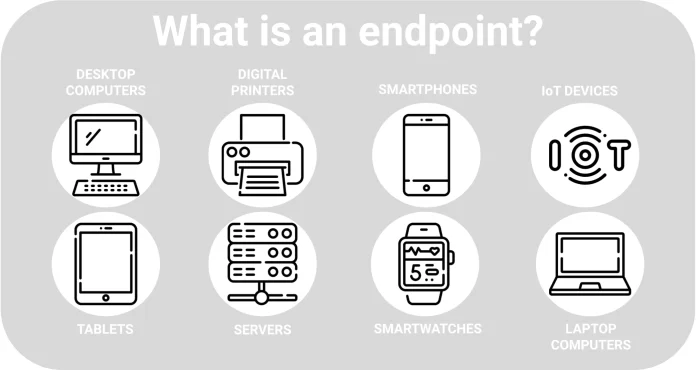What is an Endpoint Device
Endpoint devices refer to the computing devices that serve as entry points or endpoints to a network. They facilitate communication and interaction between users and networks, playing a pivotal role in modern technology infrastructure. These devices range from traditional desktop computers and laptops to handheld devices like smartphones and tablets.
Endpoint devices are called such because they represent the endpoints or points of connection where users or systems access the network infrastructure. They interact with servers, databases, and other resources on the network to send, receive, and process data. In the context of cybersecurity, endpoint devices are often targeted by malicious actors, making endpoint security a critical concern for organizations and individuals alike.
Types of Endpoint Devices
- Desktop Computers: Traditional computing devices typically found in office settings or homes. Read about What is WebDAV Protocol
- Laptops: Portable computing devices designed for mobility and versatility.
- Smartphones and Tablets: Handheld devices offering a wide range of functionalities beyond communication.
- IoT Devices: Internet-connected devices like smart TVs, smart home appliances, and wearable gadgets.

Functions and Features of Endpoint Devices
Endpoint devices vary in terms of processing power, connectivity options, and operating systems. They enable users to perform tasks, access information, and communicate seamlessly. From high-performance computing tasks to leisure activities, endpoint devices cater to diverse user needs. Discover about Which VPNS Do Hackers Use
Endpoint Security
Ensuring the security of endpoint devices is paramount in today’s digital landscape. With the proliferation of cyber threats, endpoint security measures are essential to safeguard sensitive data and mitigate risks. Common security threats include malware, phishing attacks, and unauthorized access.
Endpoint Management
Endpoint management involves the administration and maintenance of endpoint devices within an organization. It encompasses tasks such as device provisioning, software deployment, patch management, and troubleshooting. Effective endpoint management enhances productivity, efficiency, and security within organizational settings.
Security Concerns Associated with Endpoint Devices
Despite their utility, endpoint devices pose significant security risks to users and organizations alike. From data breaches to malware infections, endpoint devices are susceptible to a myriad of threats that can compromise sensitive information and disrupt critical operations.
Data Protection
One of the primary concerns regarding endpoint devices is the protection of sensitive data stored on these devices. In the event of theft or unauthorized access, sensitive information, such as financial records and personal documents, may fall into the wrong hands, leading to potential identity theft or financial loss.
Malware Threats
Endpoint devices are prime targets for malware attacks, including viruses, ransomware, and spyware. Malicious software can exploit vulnerabilities in operating systems and applications, compromising the integrity and confidentiality of data stored on the device.
Network Vulnerabilities
In addition to local threats, endpoint devices are vulnerable to network-based attacks, such as phishing scams and man-in-the-middle attacks. Attackers may exploit insecure network connections to intercept sensitive information or gain unauthorized access to the device.
Future Trends in Endpoint Devices
The future of endpoint devices is shaped by emerging technologies and evolving user demands. Trends such as artificial intelligence, enhanced connectivity, and advanced security features are poised to redefine the landscape of endpoint devices. As technology continues to evolve, endpoint devices will become more intelligent, connected, and secure.

Conclusion
Endpoint devices play a pivotal role in modern technology, serving as gateways to digital experiences and networks. Understanding the types, functions, security measures, management strategies, and future trends of endpoint devices is crucial for individuals and organizations alike.
FAQs
- What are the primary functions of endpoint devices?
- Endpoint devices facilitate communication, information access, and task execution for users.
- How can organizations enhance endpoint security?
- Organizations can implement measures such as antivirus software, firewalls, encryption, and employee training.
- What role does endpoint management play in cybersecurity?
- Endpoint management enables organizations to centrally manage and secure endpoint devices, ensuring compliance and risk mitigation.
- How are IoT devices transforming the concept of endpoint devices?
- IoT devices expand the scope of endpoint devices by enabling connectivity and automation across various domains, including home automation, healthcare, and industrial settings.
- What are some emerging technologies influencing the future of endpoint devices?
- Emerging technologies like artificial intelligence, 5G connectivity, and quantum computing are poised to revolutionize endpoint devices, enhancing performance, security, and user experience.







